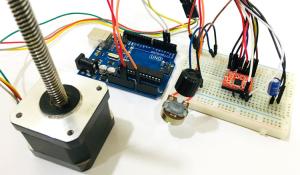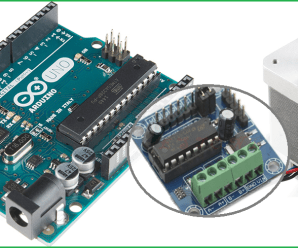
This makes me think this must be related to the priorities of the interruptions. BUT DO NOT use Alarm 0 Something else is. The low-level timer alarm interrupt takes 160 nSec to get in, 150 nSec for minimum ISR, and 160 nSec to get out again. The high-level GPIO routines produce an ISR that takes 800 nSec to enter, and almost 4 uSec to exit. Motor 1 is related to timer 3 and motor 2 to timer 4. begingroup You would need a timer to keep track of time (or maybe there are already functions that give the 'current time' in Arduino) and a state machine to keep track of state. The timer and ADC interrupts were coded using low-level register manipulation. Since the pulses are measures in microseconds it doesnt take much to cause a long or short pulse. The stepper pulses are interrupt driven so a long ISR (such as SoftwareSerial send or receive) will cause delays in the pulse generation. timer interrupt, after it being signaled by the ISR. Stepper Motor Jittter is usually caused by an ISR taking too much time. On the LCD I have a countdown using millis () subtracting seconds from the total runtime. Arduino 101 board for displaying the current date and time, as initi Oct 07. Although, if its motor 1 who has to do 34 steps and motor 2, 18, everything works. I have a stepper that runs at x speed when a button is pressed. In this case, both motors 1 and 3 finish but motor 2 gets stuck and does not move any more. An external measurement relates directly to TCNT3, which changes the frequency of the PWM signal, which in turn changes the stepper motor speed. Im using timer 3 to vary the PWM frequency to control the speed of a stepper motor. This only happens under one condition: when motor 1 has to do 18 steps and motor 2, 34. As stated, this ISR runs every 0.1 second.



My problem is that, at some point, my interruptions crash and one of the motors stops working. This way, at each interruption, I make the motors do one step and, after that, I set the new compare value for the timer in order to reach the new velocity to move at. For so, I use timers 3, 4 and 5 in compare mode. In order to do so, from the distances to move of each of the motors, I calculate the amount of steps to do and the velocities for each of those steps in order to ensure that all the motors finish at the same time. The goal is to move to different positions applying accelerations and decelerations while finishing all of them at the same time. I am working with a MEGA2560 trying to implement velocity ramps for three steppers at the same time.


 0 kommentar(er)
0 kommentar(er)
